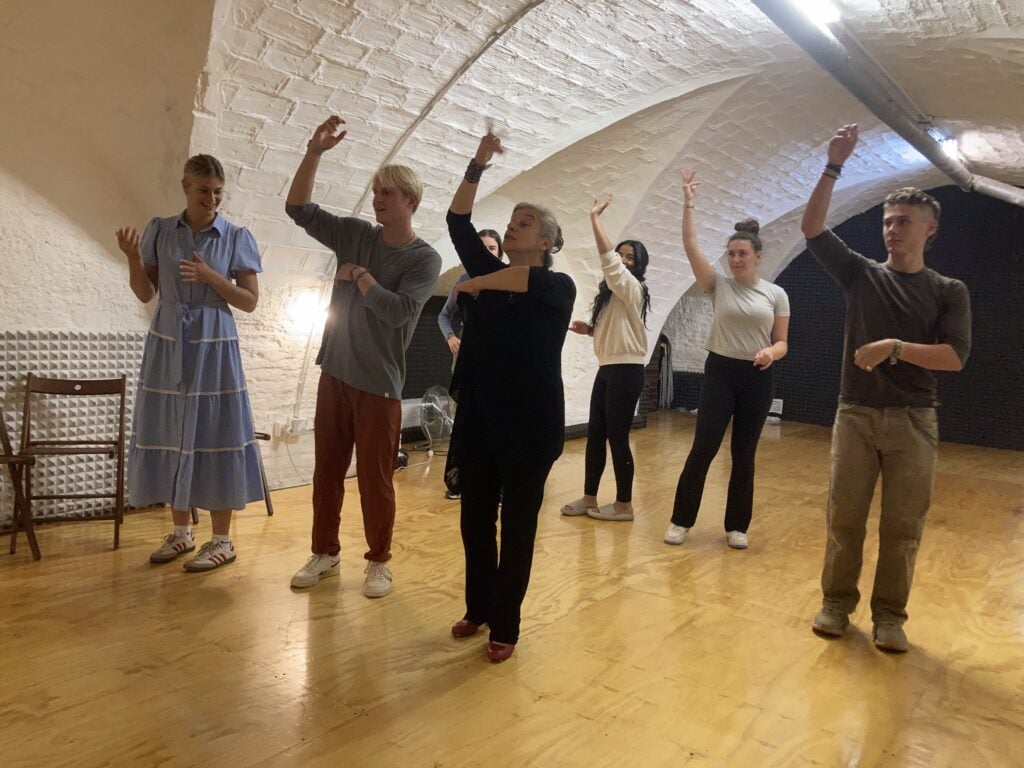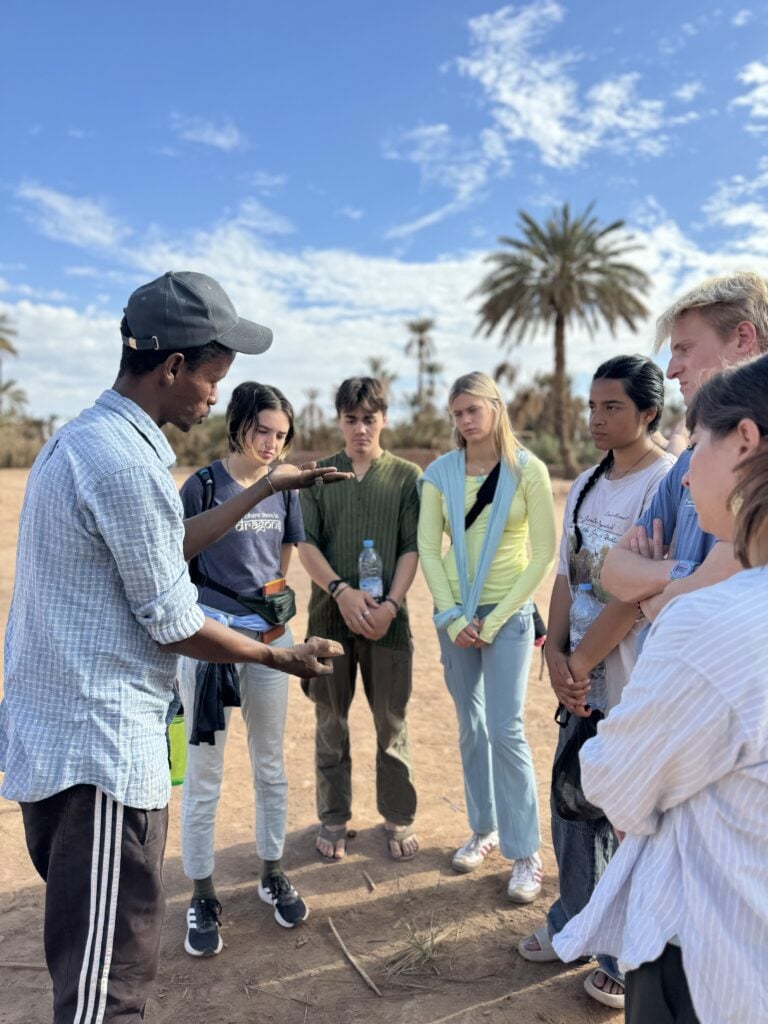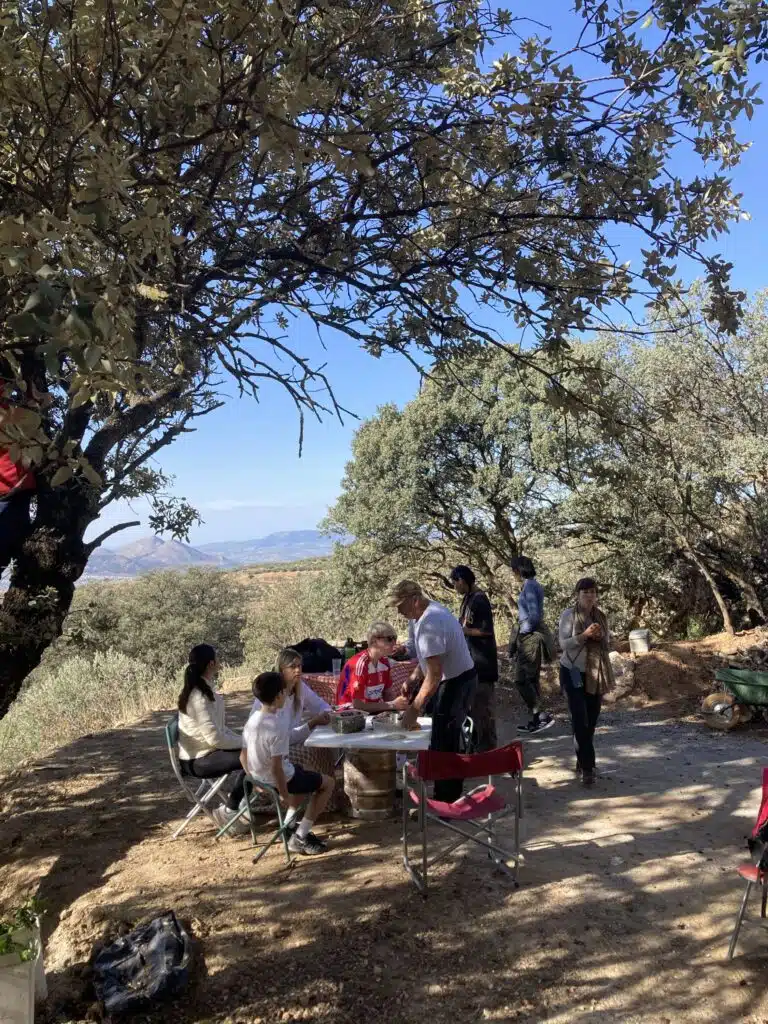Home in the Mountains
“I had never set foot in a car like the one that took me into the mountains, but it took me to a place that felt like home. The air ran cool through the cranked down windows and helped subside the otherwise uncomfortably warm air that was occupying the car. We wove our way through narrow roads, fading from pavement to mud to dirt and rock. We passed by scores of children, some playing soccer while others peered out of tents shyly watching our passing car. Upon our arrival to the home in the mountains we were greeted by sheep, donkeys, cats and dogs, as well as two of my host sister Nadia’s sisters and a brother. There wasn’t one house there as I expected, but at least a dozen structures all around made of white and mint and roofed with wood.
Nadia and I roamed aimlessly around the woods as the sky grew grey, and soon thunder shattered the comfortable silence. The rain came unceasingly, paired with the wind and thunder it created the perfect storm; the kind that makes you feel alive. We walked through the rain past trees and shades of green who’s appearance surprised me. I had the preconception that Morocco was filled only with sand and coastline. We met another brother, a photographer, who took us to a viewpoint of Azrou. The mountains surrounded hundreds of tiny houses, each a different color or shade creating a microscopic kaleidoscope.
It was the first time I had felt the cold air in Morocco, and I was thankful for the silence that accompanied it. When we returned to the houses warm hospitality greeted us, helping thaw my bones from the icy wind. I had never seen a cup of tea presented more beautifully, poured into delicate gold cups from towering heights, each cup in a silent competition from the last for the increased presence of bubbles.
The time had seamlessly blended into itself since our arrival into the mountains. I am learning not to trust the lightness of the sky as it is extremely deceiving and had once again led me to believe that it was hours earlier. The loss or ignorance of time fascinates me, and it’s hard to figure out how an omnipresent and controlling force exists so strongly in one part of the world but not another. The ground cracked softly beneath our feet as we made our way to a field. Soon the sheep came, closely following another one of Nadia’s brothers. I approached timidly and was met by curiosity and fear. We followed the sheep for almost an hour, sitting occasionally and listening to more of the blissful silence that was this very time and place in the world.
We made our way back up the hill, collecting sticks and twigs that a fire later hungrily consumed. The fire quickly became more than just a source of heat, warming another kettle full of tea. The tea ran warm as the smoke seeped into my clothes and skin surely to remain there for the rest of the trip. Listening to the hum of crickets and the wind through the trees I was filled with a profound happiness and sadness; happy as this was one of my favorite days that I had lived, and sad as I knew that I would never be in this beautiful place again surrounded by such beautiful people.”
Gigi
Morocco Program Student






























































